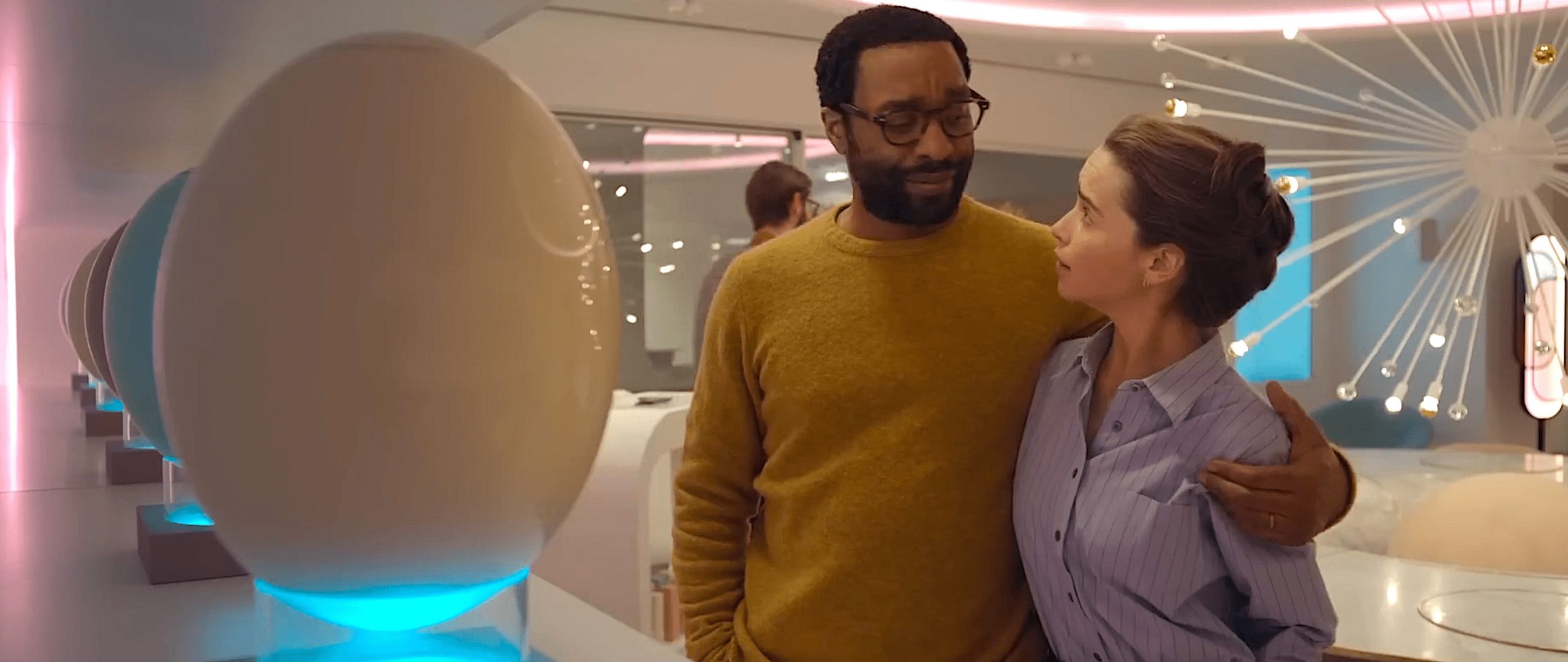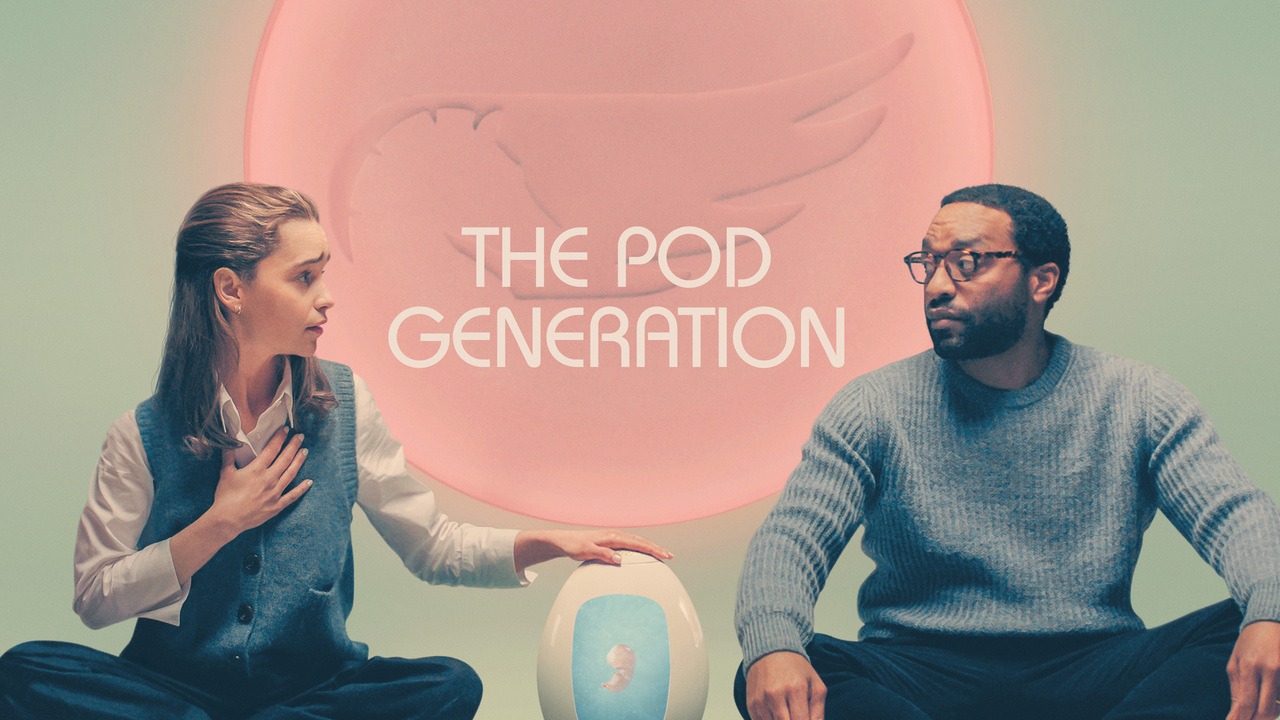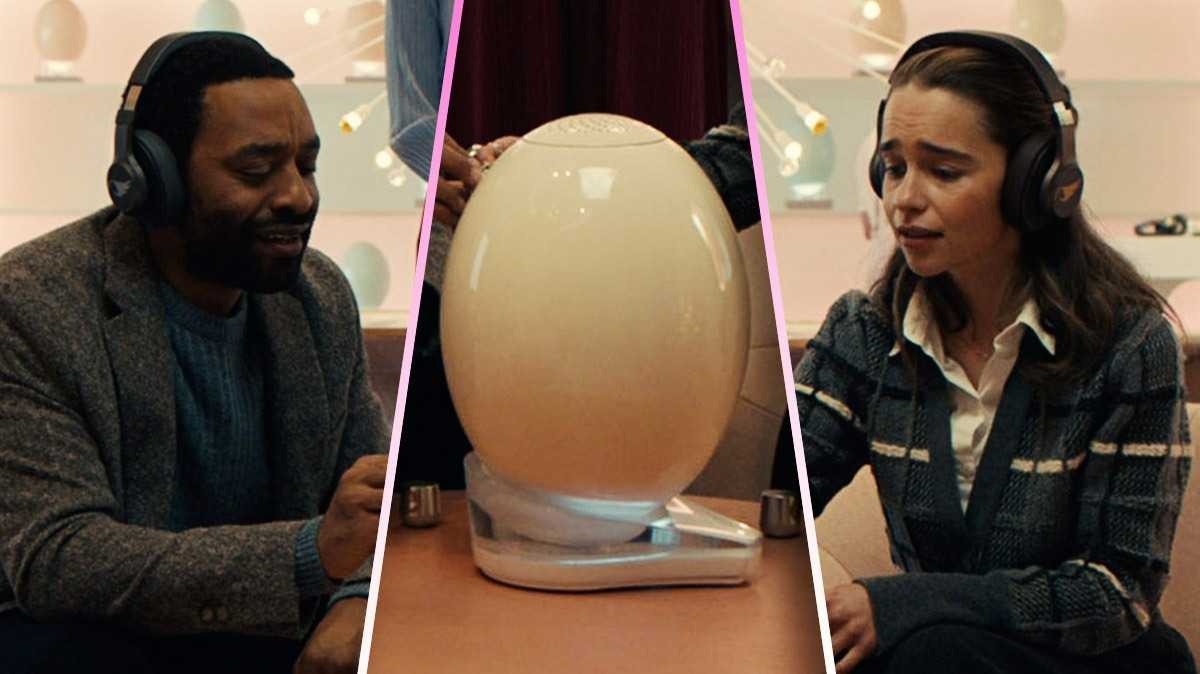The rapid advancement of artificial intelligence has transformed various aspects of daily life, but what if this technology could also redefine the way humans experience childbirth?
The science fiction romantic drama The Pod Generation delves into this concept, following the journey of Rachel and Alvy as they cross parenthood with the assistance of a detachable AI-controlled womb.
While certain moments in the film offer intriguing and thought-provoking insights, an inconsistent emotional impact and a jarring tonal move toward the conclusion prevent it from standing out as anything beyond an average watch.

Plot Summary: What is the Film About?
Taking place in a futuristic version of New York City, The Pod Generation introduces Rachel, who experiences a tranquil dream where she envisions herself pregnant.
However, reality presents a different scenario, as her professional life leaves her with little time to go through the physical challenges of pregnancy, despite her and her husband Alvy’s desire to have a child.
The world they inhabit is deeply intertwined with artificial intelligence, with AI assistants managing daily schedules and artificial nature pods replacing actual outdoor experiences.
Employed at the leading tech company Pegazus, Rachel is a dedicated and accomplished professional who soon receives a promotion.
As part of this advancement, her employer offers financial support for the costly childbirth process through an innovative program at the Womb Center.
Rachel’s situation takes a turn when she is informed that she has been selected from the Womb Center’s waitlist, granting her access to their groundbreaking artificial womb technology. Given her demanding career, she sees this as an ideal solution, yet a major obstacle stands in her way—Alvy.
Unlike Rachel, he prefers to embrace life’s natural aspects and avoids technological interference whenever possible. As she prepares to meet with representatives from the Womb Center, Rachel contemplates how to break the news to Alvy and convince him to support her decision.
What is the Womb Center, and How Does it Function?
Throughout The Pod Generation, details emerge about the Womb Center, a state-of-the-art research facility operating under the corporate tech giant Pegazus.
The company’s CEO frequently appears in media interviews, presenting his organization’s involvement in the project as a solution to the global decline in birth rates.
With the physical and mental demands of pregnancy discouraging many couples from having children, population growth has stagnated. To address this, the Womb Center has pioneered a technology that allows human embryos to develop inside detachable artificial wombs.
Designed to replicate the conditions of a natural womb, the artificial pod resembles a large, egg-shaped chamber where an embryo, formed using the biological material of the parents, is placed for development.
Initially kept at the Womb Center, these pods can later be temporarily brought home by parents, enabling them to establish a bond with their unborn child.
The nurturing process is managed through advanced technology, including specialized feeding trays and software applications that expose the developing baby to beneficial sounds and experiences.
Additionally, genetic modifications appear to be subtly suggested, hinting at the possibility of early intervention to prevent hereditary diseases.
Although discussions of childbirth costs are absent, the financial burden is evident. The executives at Pegazus and the Womb Center carefully avoid addressing the affordability of their services, as the artificial womb program is more expensive than traditional pregnancy.
Like many corporations depicted in futuristic sci-fi films, Pegazus prioritizes profitability while using socially progressive rhetoric to justify its practices.
The company markets its product as empowering women by freeing them from the burdens of pregnancy, yet its true focus lies in exploiting exclusivity.
Access to artificial wombs has become a status symbol, allowing Pegazus to continuously raise prices and manipulate contractual terms to maximize revenue.
Why Does Alvy’s Opinion about the Pod Gradually Change?
Throughout most of The Pod Generation, Rachel and Alvy struggle with conflicting perspectives on the role of technology in their lives. Given her position at a leading tech firm, Rachel has fully embraced AI-driven conveniences, often prioritizing work over artificial nature pods designed to simulate outdoor experiences.
She sees the artificial womb as a logical and beneficial advancement, similar to her coworkers who appreciate its convenience.
Alvy, however, has a completely different outlook. His profession as a botanist and deep appreciation for nature set him apart in a society where even food production relies on synthetic methods akin to 3D printing.
Unlike Rachel, Alvy finds solace away from technological dominance, preferring the quiet life of his suburban home, where he cultivates real plants using soil and water—resources that have become increasingly rare.
As a botany professor, he encourages his students to develop a genuine connection with nature, astonished when he encounters teenagers who hesitate to eat fresh fruit directly from a tree. Given his strong beliefs, his opposition to using an artificial womb to conceive their child is unsurprising.
Alvy is taken aback when he learns of Rachel’s decision to enroll in the Womb Center program without consulting him.
Beyond feeling excluded from such an important choice, he harbors deep concerns about the ethical and biological implications of the artificial womb. He values natural processes, including childbirth, and refuses to accept a method that disrupts human evolution.
Skeptical of the entire procedure, Alvy resists the idea, even as Rachel’s colleagues and AI therapist attempt to ease his concerns. However, his love for Rachel leads him to compromise, as he recognizes how much motherhood means to her.
Even after reluctantly agreeing to the process, Alvy remains doubtful. When Rachel first brings the artificial womb home, he maintains a cautious distance, uneasy with the device and its frequent emergency alerts. His feelings begin to switch, though, as Rachel becomes increasingly detached from the experience.
Plagued by unsettling dreams and overwhelmed by the responsibility of monitoring the pod, she starts to withdraw. With Rachel spending long hours at work, Alvy finds himself alone with the pod, slowly developing a connection with it.
Over time, Alvy’s attitude changes as he begins to see the pod not as an unnatural invention but as his child. He starts wearing it around his waist and even brings it to work, fully embracing his parental role.
While his fundamental beliefs about nature remain intact—evident in his continued advocacy for real trees in his botany classroom—he grows emotionally attached to the pod.
The Pod Generation also touches upon the shifting dynamics of gender roles. At first, Alvy’s discomfort with carrying the pod reflects traditional male attitudes, yet as he experiences fatherhood firsthand, he fully accepts the responsibility. Conversely, Rachel, once enthusiastic about the process, becomes increasingly uncertain.
Her desire to form a closer bond with the pod leads her to bring it to work, only to be reprimanded by her superiors, exposing the corporate hypocrisy of Pegazus. As her doubts intensify, she is sent to an AI therapist to rationalize her feelings.
What Happens to Rachel, Alvy, and their Child?
As The Pod Generation nears its conclusion, the film undergoes a tonal transition, initially giving the impression that it will take a science fiction thriller approach. This switch is largely driven by Rachel and Alvy’s increasing skepticism toward the Womb Center company.
Due to a surge in demand from couples seeking to utilize its services, the company has modified its contractual terms. Now, it aims to ensure babies are born within 39 weeks, swiftly clearing pods for new clients.

Alarmed by the potential risks this might pose to their child, Rachel and Alvy grow wary and insist on keeping the pod in their home, determined to handle the birth themselves.
When their request is denied by a Womb Center representative, Alvy takes matters into his own hands by stealing the pod and bringing it back to their house.
Aware that the company will attempt to retrieve it, the couple decides to leave their New York apartment and relocate to Shell Island, where advanced AI technology is absent. As the baby’s birth approaches, the Womb Center abruptly cuts off remote support, placing the child in immediate danger.
However, since the birth is imminent, Alvy manages to intervene in time. With great care, he pries open the pod and successfully delivers the baby, performing the act much like a doctor would.
Rather than relying on unexpected sci-fi elements, The Pod Generation concludes with an emotional account centered on two devoted parents adjusting to a world dominated by artificial intelligence.
Alvy and Rachel opt to remain in their secluded Shell Island home, choosing a life away from technological distractions to raise their child in a natural setting.
Rachel also takes the broken pod, packs it up, and sends it—presumably back to the Womb Center—since it no longer serves any purpose.
Additionally, a mid-credits scene features the CEO of Pegazus appearing in a televised interview, making startling assertions that, in the future, the company intends to let babies select their parents.
This statement not only comes across as absurd but also raises alarming ethical concerns, as Pegazus may attempt to integrate AI directly into human embryos, accelerating their development beyond natural evolution.



